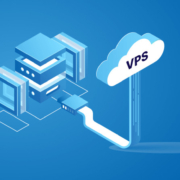A Very Simple VPS Server Tutorial for Beginners
Considering how the internet expands in the present scenario, businesses and developers alike are searching for better, more affordable, and scalable solutions for hosting their websites and applications. One of the most popular options today is a virtual private server hosting solution. Although shared hosting has long been the go-to option for beginners, a VPS server presents a smarter, scalable alternative for those who need more control, performance, and flexibility without the full cost of a dedicated server.
This tutorial is specifically tailored for beginners. If you’ve heard about virtual private server hosting but feel overwhelmed by the technical jargon, don’t worry. We’ll walk through the concept, setup process, and advantages of using a VPS server, all in the simplest terms possible.
What is a VPS Server?

To begin with, VPS stands for Virtual Private Server. Consequently, it is a virtualized server that imitates a real server, as the name implies. However, it’s hosted on a larger machine (known as the host server) and divided into smaller virtual environments.
Each VPS server gets its dedicated resources, like CPU, RAM, and disk space, while still being housed on the same physical machine as others. Because of this, it offers the privacy and performance similar to a dedicated server, but at a much lower price point.
So, how does it differ from other hosting types?
- Shared Hosting: Resources are shared among all users. Cheaper, but slower and less secure.
- Dedicated Server: All resources are yours. High performance but very expensive.
- Virtual Private Server Hosting: The perfect middle ground, private resources on a shared machine.
Why Should Beginners Choose a VPS Server?
Therefore, there are several reasons a beginner might choose virtual private server hosting.
1. Cost-Effective Performance
While you get dedicated resources like in a dedicated server, the cost remains much more affordable. Furthermore, you’re only paying for what you use, and you can scale up as your needs grow.
2. More Control
Unlike shared hosting, a VPS server gives you root access. Consequently, this means you can install your software, configure server settings, and manage everything from the ground up.
3. Better Security
Since your environment is isolated, your data and applications remain unaffected by other users on the same physical server.
4. Scalability
As your traffic or application requirements increase, it’s easy to upgrade your plan. Additionally, most providers offer flexible plans that enable smooth scaling.
Basic VPS Terminology You Should Know
Before diving into the setup, let’s get familiar with a few common terms:
- Root Access: Full administrative access to your server.
- SSH (Secure Shell): A protocol to securely log into your server remotely.
- RAM/CPU: Resources allocated to your VPS server.
- Bandwidth: The volume of information that your server is capable of sending.
Now that the groundwork is laid, let’s explore how you can set up and manage a VPS server with minimal technical know-how.
Step-by-Step VPS Setup for Beginners
Here is some guidance about the setup for beginners.
Step 1: Choose the Right VPS Hosting Provider
Many providers are offering virtual private server hosting solutions. Look for one that offers:
- Easy-to-use control panel
- 24/7 customer support
- Scalable pricing
- Good uptime guarantees
Consequently, some popular providers include Estnoc, DigitalOcean, and Linode.
Step 2: Select an Operating System
Most VPS servers run on either Linux or Windows. Moreover, Linux (Ubuntu, CentOS, Debian) is recommended for beginners because it is widely supported and cost-effective.
Step 3: Access the Server Using SSH
You will receive login credentials from the provider after your VPS server is activated. Furthermore, use these to access your server using an SSH client like PuTTY (for Windows) or the terminal (for macOS/Linux).
bash
CopyEdit
ssh root@your-server-ip
Enter the password, and you’re in!
Step 4: Update Your Server
Always start by updating your OS packages.
bash
CopyEdit
sudo apt-get update && sudo apt-get upgrade
Additionally, this guarantees you access to the newest features and security updates.
Step 5: Install a Web Server
A web server is required to host a website. While some of the most popular are Apache and Ubuntu.
Example: Install Apache on Ubuntu
bash
CopyEdit
sudo apt install apache2
Step 6: Upload Your Website Files
You can use SFTP (Secure File Transfer Protocol) to upload files from your computer to your VPS server. Additionally, tools like FileZilla make this easy even for beginners.
Step 7: Secure Your VPS
Here are some simple security measures:
- Change the default SSH port
- Disable root login via SSH
- Install a firewall (like UFW)
- Use strong passwords or SSH keys
When to Consider Upgrading to a Dedicated Server
While virtual private server hosting meets most needs, there are times when a dedicated server becomes necessary:
- You’re running high-traffic websites or apps
- You need extremely high security or compliance
- Custom hardware configurations are required
In these scenarios, a dedicated server offers unmatched performance and flexibility. However, it also demands more technical expertise and a higher budget.
Maintenance Tips for Your VPS Server
Even though VPS gives you more control, it also means more responsibility. Here are some routine tasks:
- Regularly update your software and OS
- Back up your data frequently
- Monitor server performance
- Scan for malware or security breaches
With consistent care, your VPS server will stay fast, secure, and reliable.
Common Mistakes Beginners Should Avoid
- Ignoring Backups: Always back up your data before making major changes.
- Not Monitoring Usage: Keep an eye on CPU, RAM, and disk space.
- Weak Passwords: Make use of SSH keys or complicated passwords.
- Skipping Updates: Unpatched software is a major security risk.
Conclusion
Getting started with virtual private server hosting can seem daunting at first, but as we’ve seen, it’s more accessible than you might think. Whether you’re hosting a blog, managing an app, or setting up a development environment, a VPS server provides the performance, control, and scalability that both beginners and experienced users can value. While it doesn’t offer the raw power of a dedicated server, it’s a great starting point for those wanting to move beyond shared hosting without spending a lot. With a basic understanding of setup, management, and security, you’re now ready to explore VPS with confidence.
Estnoc IT is a global leader in virtual private server hosting, providing reliable, scalable, and secure VPS and dedicated server solutions for businesses of all sizes. With intuitive control panels, lightning-fast support, and robust infrastructure, they make it easy for both beginners and experts to succeed in the cloud. Contact them today to explore flexible hosting plans tailored to your needs.

